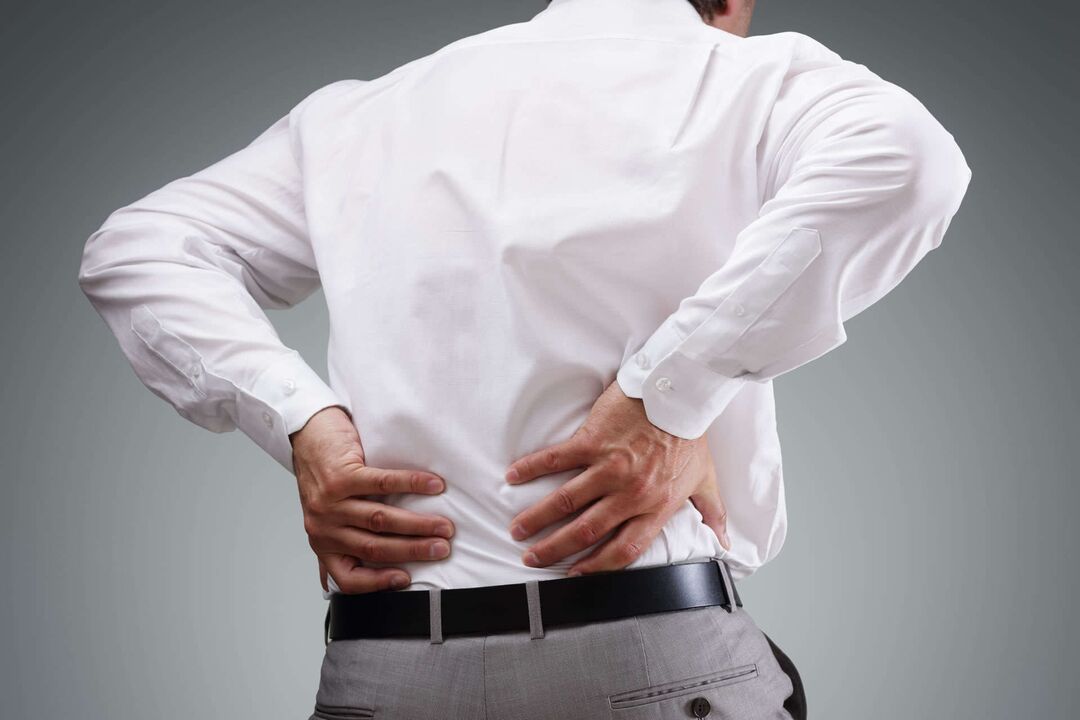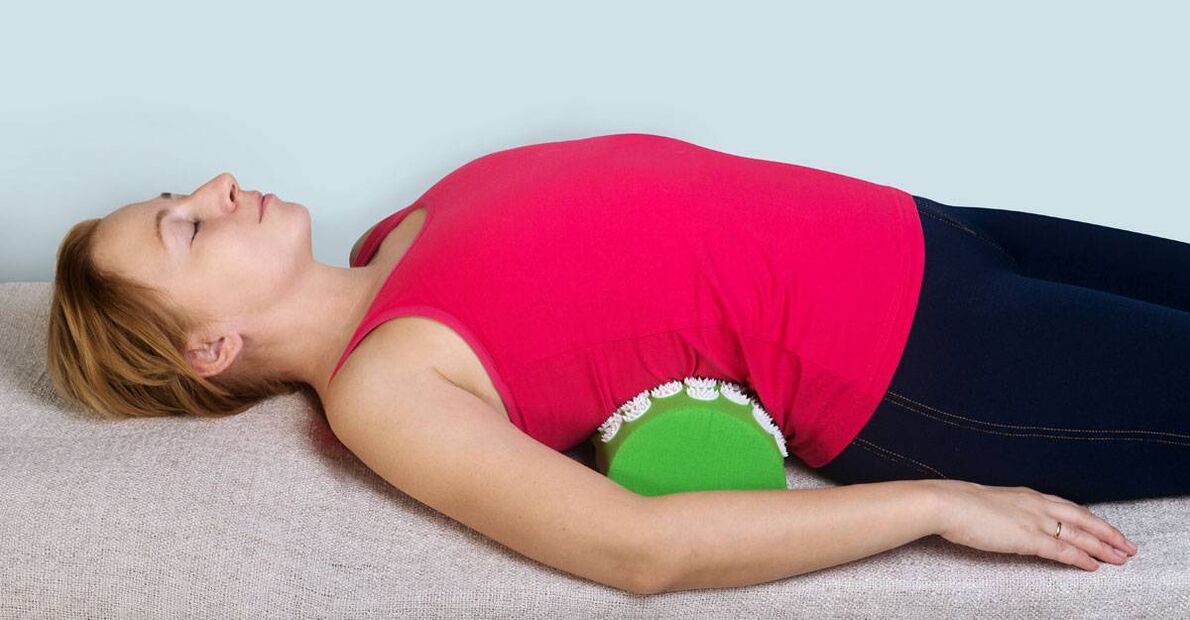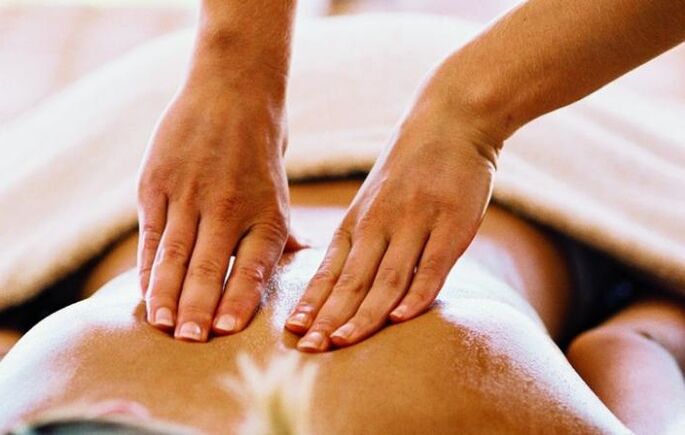In osteochondrosis of the spine, the destruction of bone and cartilage tissue of one or more parts of the spine occurs. This disease is chronic and develops in almost all adults. This is due to the normal aging of the body.

Intervertebral discs undergo atrophic changes and the age at which this occurs depends on many factors:
- trauma;
- diseases and congestion of the spine.
Spinal congestion includes:
- walking with a curved back;
- improper sitting;
- features of the structure of the spine;
- insufficient nutrition of spinal tissues due to hereditary anomalies.
In osteochondrosis, the nucleus located between the spinal discs loses some of its water. As a result, metabolic disorders occur in the nucleus and access to various minerals and vitamins is difficult.
After a while, cracks appear in the disc, it becomes flat. Then the nearby joints and ligaments begin to be affected, forming inflammation of the tissues. Due to inflammation, the adjacent vertebrae are displaced. This is dangerous with the appearance of radicular symptoms: pain along the affected nerve.
An intervertebral hernia is also possible, which in turn can provoke spinal cord compression. Osteochondrosis is characterized by the appearance of osteophytes - bone growths on the vertebral bodies. These growths can compress the spinal cord and cause radicular syndrome.
The cervical and lumbar regions are most often susceptible to osteochondrosis.
Cervical osteochondrosis
Reasons:
- sports activities (weightlifting);
- Overweight;
- metabolic disease;
- sedentary work (programmers, accountants, drivers, etc. );
- flat steps;
- spinal cord injury;
- hypothermia.
Symptoms
The main symptoms of osteochondrosis of the cervical spine are pain in the head and neck. One worries about severe headache, neck pain, radiation to the arm, sternum pain. The patient may complain of lumbago - the appearance of acute neck pain, muscle spasm and restricted movement.
You can also hear a crunch when turning your neck. Due to pinched nerves and blood vessels, a person may have numbness of the tongue and fingertips. The patient will complain of reduced hearing and vision, high blood pressure and weakness in the muscles of the arms and legs.
Chest osteochondrosis
This type of osteochondrosis is quite rare. This is due to the anatomical structure of the chest. It consists of 12 vertebrae that are connected to the ribs by joints. In front, the ribs are connected to each other by the sternum. This creates an excellent frame of the spine, sternum and ribs, which protects the internal organs from various injuries.
The vertebrae of the chest are low in height and have long prickly growths that are located one above the other, like shingles. Due to this structure, this part of the spine has low mobility. The intervertebral discs of the thoracic region are rarely injured.
The reasons for the formation of this type of osteochondrosis:
- irrational load distribution;
- delayed feeding of the intervertebral discs;
- sedentary work;
- the presence of scoliosis.
Symptoms
As with other species, pain is a leading symptom of thoracic osteochondrosis.
But with osteochondrosis of the chest, the pain can be different. Dorsalgia - prolonged discomfort and mild pain along the thoracic spine. The pain can affect the cervical and lumbar region.
Dorsago is one of the signs of thoracic osteochondrosis, in which the pain appears in the form of an attack. In essence, it is intense, sharp, leads to difficulty breathing and leads to restricted muscle movements. In addition to pain, patients may experience tingling in the chest, impaired sexual function, pain in the heart, kidneys, and stomach.
What is the risk of affecting the chest?
The spine is designed to narrow in the thoracic region, so that hernias caused by osteochondrosis will quickly lead to compression of the spinal cord. This can easily lead to problems with the heart, pancreas, liver and kidneys, as the chest area is connected to all these organs through nerve fibers. That is why it is very important to visit a doctor on time. It will help you understand where your alarming signs of osteochondrosis are coming from and will provide competent treatment for the disease.
Lumbar osteochondrosis
Osteochondrosis of the lumbar spine occurs due to weight lifting. There is usually a nucleus in the center of the intervertebral disc that contains a large amount of water. Due to the liquid, the core becomes slightly compressible, and a compression of 500 kg is required for its rupture.
However, the disc affected by osteochondrosis becomes weaker and it will take only 200 kg to tear it. If a person weighing 70 kg lifts 15 kg of load in a bent position, and for the spine this is a load of 200 kg, the intervertebral disc may rupture. Therefore, the first symptoms of osteochondrosis of the spine appear when lifting weights.
Symptoms
- lumbar pain;
- inability to move in the lower back;
- sleep disturbance;
- irritability;
- fatigue;
- inability to meet the needs of the household;
- reduced sexual function in men;
- menstrual disorders;
- cold feet syndrome.
With the transition of osteochondrosis to the sacral area, the patient develops pain in the kidneys and impaired urination.
Diagnosis
Osteochondrosis is treated by a neurologist. For a start, he examines the spine, noting the presence of scoliosis. Once he feels it, the doctor will be able to understand how much the spine, tendons and nerves are affected.
Once the neurologist suspects osteochondrosis of the spine, he will refer the patient for further examination. This includes undergoing an X-ray, magnetic resonance imaging. If there is a suspicion of destruction of the intervertebral disc, discography is performed. It is also prescribed to determine the degree of damage to the nerve pathways.
In general, it is very difficult to diagnose osteochondrosis of the spine. Eventually, a person may complain of pain in the heart, liver, kidneys, pancreas, or sexual dysfunction. However, with a thorough examination, an experienced doctor will be able to suspect this disease and prescribe the right treatment.
Treatment
The treatment of osteochondrosis is a very long and difficult process. In the acute period, the patient needs the rest of the affected segment. If the cervical spine is affected, then the patient should wear a Shants fixation collar. If the lumbar spine hurts, the patient needs bed rest. It is best to keep the patient in hospital. Only there will he be able to fully comply with the defined regime. The bed of such a patient should be firm. For this, a wooden board is placed under the mattress.
Medication treatment
As mentioned above, the main symptom of the disease is pain. Therefore, the patient is prescribed analgesics, nonsteroidal anti-inflammatory drugs to relieve pain and other symptoms of osteochondrosis.
Unfortunately, prolonged use of these drugs causes damage to the lining of the gastrointestinal tract and the patient develops the following symptoms:
- nausea;
- vomiting;
- stomach pain;
- feeling of heaviness in the abdomen.
Stomach ulcers may also worsen or stomach bleeding may occur. Therefore, you should consult your doctor before using these medicines. If the pain caused by osteochondrosis lasts for 3 months, antidepressants are prescribed together with these drugs. It has been found that in addition to their sedative effect, they are able to reduce pain.
All drugs can be classified as symptomatic therapy. They will help relieve the pain, but will not save the person from the disease itself.
Chondroprotectors are prescribed to restore the intervertebral discs and cartilage. These drugs improve the metabolism of connective tissue and help restore cartilage. The drugs are taken for a long period of time, on average - 4 - 6 months.
In addition to repairing tissues and improving their metabolism, these drugs also have an analgesic effect. Another group of drugs needed for osteochondrosis of the spine are drugs that improve blood circulation, their use helps to dilate blood vessels and if thioctic acid is taken in combination with it, then the metabolism of nerve cells in humans will improve.
As with any disease, patients need calcium supplements. It will restore the activity of bone tissue, increase the strength of ligaments and tendons, and also prevent osteoporosis - a disease that accompanies osteochondrosis.
Physiotherapy

Dosed loading of the spine will improve the patient's condition. But you have to do the exercises very carefully. In the acute period, physical education is contraindicated. Only when the sensations of pain subside can you start practicing a little.
Exercise will improve blood circulation in the spine and strengthen muscles. Thanks to the blood flow, the metabolism will improve and the recovery of the damaged intervertebral discs will begin. But you must also remember that classes must be held regularly, otherwise there will be no result.
Exercises for lesions of the cervical spine
- Lie on your back and stand up. Place one hand on your stomach and the other on your chest and inhale, hold your breath for 10 minutes, then exhale and relax. The duration of the exercise is 3-5 minutes. You should do it 3-5 times a day.
- Lie on your stomach and straighten your legs. Leaning on your abdomen and legs, you should lift your head and upper chest. Do the exercise for 3-5 minutes with an interval of 30 seconds.
- Lie on your back and bend your knees. In this position, turn to the right and left. Do the exercise for 3-5 minutes with an interval of 30 seconds.
Exercises for chest lesions
- Lie on your stomach. Place your hands on the floor and lean back. Hold this position for 5-10 seconds. Do the exercise for 3-5 minutes with an interval of 20 seconds.
- Lay down on your back. Raise your head and legs ("boat"). Hold for 10-20 seconds. Do the exercise for 3-5 minutes with an interval of 20 seconds.
Exercises for lesions of the lumbar spine
- Lie on your back, bend your knees and bring them closer to your chest. Swing back and forth and roll back to the sacrum and back. Rotate for up to 2 minutes. Then you should lie down and relax.
- You should stand on all fours and bend as much as possible. Do the exercise for 3-5 minutes with an interval of 20 seconds.
- While standing, imagine spinning the hoop for 2 to 3 minutes. Exercise 10 times a day.
Surgery
In the absence of effect of conservative treatment and complications of osteochondrosis, surgical treatment is prescribed. During the stabilization of the spine, the pressure on the spinal cord and roots is eliminated. If a person has an intervertebral hernia, it is removed. Because this operation can damage the spinal cord and nerves, it is performed only for vital reasons.
Physiotherapeutic treatment
The appointment of physiotherapy procedures has a positive effect on the course of the disease and accelerates the recovery process. In osteochondrosis is allowed:

- visit to the sauna or bath;
- swimming in the pool;
- massage;
- paraffin therapy;
- manual therapy;
- laser therapy;
- various baths;
- mud therapy;
- electrophoresis with anti-inflammatory drugs or muscle relaxants;
- magnetic therapy;
- darsonval.
All these procedures improve blood circulation in the affected area, allow the muscles to relax and relax the whole body. Physiotherapy procedures are prescribed during the rehabilitation period, when the patient is not bothered by severe pain.
Prevention
No one is immune to osteochondrosis. After all, we all grow old, and our whole body grows old with us. In order not to fail your disease, you need to do sports from an early age. Moderate physical activity improves blood circulation, normal metabolism. It also trains the muscles that protect the spine. To prevent osteochondrosis, everyone should:
- eat right - vitamins and minerals needed by the body;
- to give up bad habits;
- engage in physical education;
- do not bend down;
- protect your back from hypothermia;
- do not lift too heavy objects;
- take a contrast shower and temper;
- avoid stress.
It is especially important that people suffering from this disease follow all the recommendations, as their failure will lead to exacerbation. If you have back pain that does not go away for a long time, you should seek professional help. Only a doctor can make the correct diagnosis and prescribe treatment.
Do not delay the visit to the clinic, because it is better to treat the disease in the early stages. Also, do not self-medicate - each drug has its own contraindications, which you may not know. Strictly follow all the doctor's recommendations and then the disease will soon recede!












































